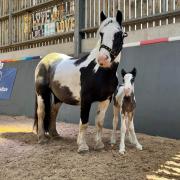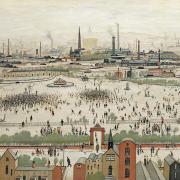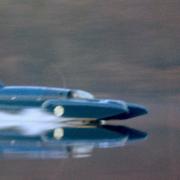True style is worth sticking your neck out for, as Ray D'Arcy reports
At the age of 86 Dennis Leigh could be forgiven for dreaming of retirement - but if he ever did, judges, barristers and some dedicated followers of fashion, might well ask him to think again.
Thankfully for the majesty of the law and those who like to cut a dash with their sartorial style, he loves his work so much he has no intention of giving up. Dennis and his family run what they think may be the last traditional Chinese laundry in the country.
The laundries, immortalised by George Formby in his song Chinese Laundry Blues, were once commonplace and boxes of stiff collars - now mainly worn by lawyers but once de rigueur for businessmen, and still favoured by chaps who like more formal fashion - still arrive by post at the Leighs’ shop in Wavertree from all over the country, including the Old Bailey.
They choose Dennis because he is one of the few who still has the know-how to launder and starch detached collars, with that perfect shine so loved by wearers.
Stiff collars are separate from the shirt, to which they are attached by front and back studs. Cleaning them is an intricate process which can take up to two days using, for one of the stages, machinery that’s at least 100 years old.
Dennis learned his trade from his father who had a laundry near Liverpool city centre. He says: ‘They are washed, then dipped in boiling starch, straightened and left to dry overnight.
‘Then they are laid on a damp cloth with another on top and a weight so the damp goes into the collars. Then they go to the collar-blocker, which is a gas-fired machine with a heated roller that gives them their shine.’
It’s almost an industrial process as it glides along on its ballbearings - and it’s not finished yet. They have now to be shaped and that entails using heavy hand-irons that have to be heated on a cooker. The ironing, involving a lot of skilled wristwork, makes the collars round so that they fit the neck. His daughter-in-law, Joanne Leigh jokes: ‘Dennis should have his wrists insured, like ballerinas do with their legs.’
The stiff collar’s heyday was in the Victorian and Edwardian eras while they have been back in the spotlight recently when they were worn by most of the male cast of Downton Abbey. The Leigh family have laundered them for many actors, including the stars of the film Chariots of Fire.
At one time Dennis dealt with 300 stiff collars a week and he has passedon most of the skills to his son Ian, 48, but Ian has never shaped the collars. ‘I can do most of the work and there’s a real art to it’ he says. ‘It would be a shame to let it go. I was once asked to name my price for the collar machine but I’d never sell it. I believe they’ve got one from one of the old Liverpool laundries in the Victoria and Albert museum.’
And what does Ian’s wife Joanne think of the chaps who still like to wear a stiff collar? ‘I think they look very dashing,’ she says. ‘We get all sorts bringing them in. Once, dapper old gents from the West Indian community used to wear them. Now it is mainly barristers and judges - we get a lot from the Liverpool courts as well as the Old Bailey.’
There’s another art to the stiff collar - learning how to wear one. Nick Collier, from Prescott, is just 33 but a dedicated follower of the fashion. Nick, looking elegant in a smart suit, formal shoes and with a semi-cutaway white detached collar worn with a red striped Bengal shirt and dark tie with a half windsor knot, started wearing stiff collars about two years ago.
‘I wanted the best and they are as close to sartorial elegance as you can get,’ he said. ‘It’s an outward statement that no matter what difficulties are to be endured, the wearer is a man with standards.’
Fitting a stiff collar involves putting back and front studs into the collarless shirt. The collar is first attached to the back stud, then the tie is slipped under the collar. Then comes the real tricky bit - fastening the collar to the front stud and knotting the tie. In cartoon fashion, the collar can spring out and the tie unravel.
‘At first it took me 20 minutes to put one on and get it right but now I’ve got it down to 30 seconds,’ added Nick, who works at a men’s outfitters in Liverpool city centre.
Nick’s father, Andrew, a teacher at Hutton Grammar School, Preston, also wears stiff collars occasionally.
Nick said: ‘My dad is always immaculately dressed. I have always admired his style. New is not always better and stiff collars, although not so fashionable now, were popular for a reason - style.’
There are different styles of stiff collar, including winged, turn-down, cut-away and rounded edge
They may seem quintessentially English but it’s believed the detached collar was actually invented in America in the 1820s
In this country the firm of Luke Eyres in Cambridgeshire is one of the main manufacturers, making 300 a week
Of all the people who have worn stiff collars one of the most famous must have been Hollywood star Fred Astaire, the epitome of elegance and grace
They retail for about �10 to �12 and cost �3.60 to launder by Dennis and his team at the Wavertree laundry/drycleaners
The print version of this article appeared in the January 2012 issue of Lancashire Life
We can deliver a copy direct to your door – order online here


























